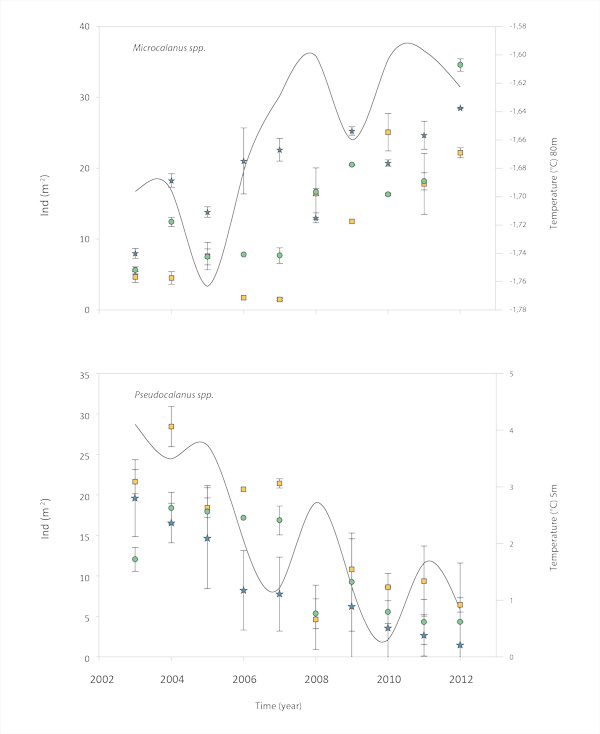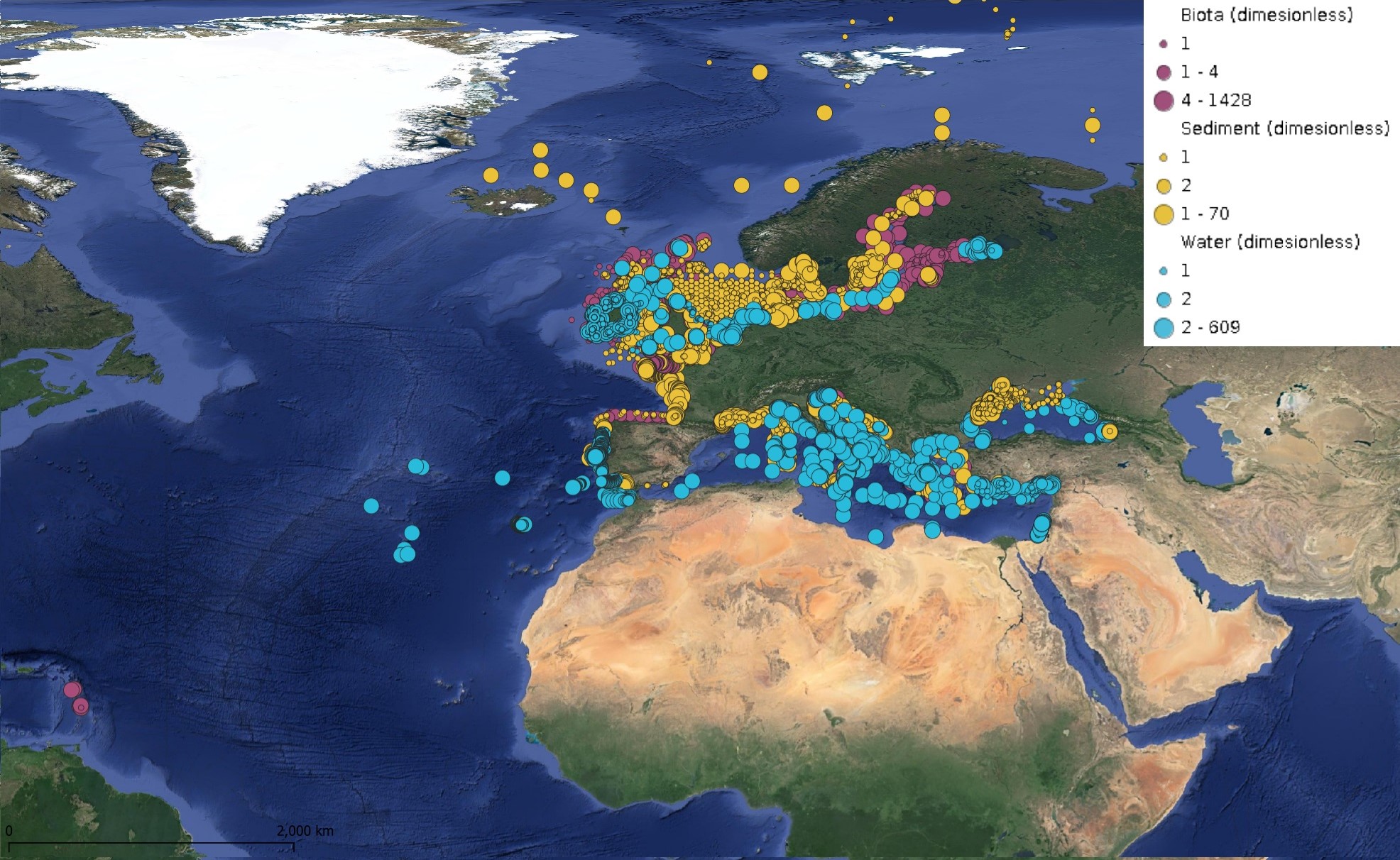oceans
Type of resources
Available actions
Topics
Keywords
Contact for the resource
Provided by
Years
Formats
Representation types
Update frequencies
status
Scale
Resolution
-

Temperature and copepod abundance in Zackenberg, northeastern Greenland. Temperature is measured at 80 m for Microcalanus and 5 m for Pseudocalanus (Arendt et al. 2016). STATE OF THE ARCTIC MARINE BIODIVERSITY REPORT - <a href="https://arcticbiodiversity.is/findings/plankton" target="_blank">Chapter 3</a> - Page 76 - Figure 3.2.7
-

Data layers show commercial fishery footprints for directed fisheries using bottom and pelagic longlines for groundfish and large pelagics respectively, and traps for hagfish, LFA 41 and Grey Zone lobster, snow crab, and other crab on the Scotian Shelf, the Bay of Fundy, and Georges Bank in NAFO Divisions 4VWX and Canadian portions of 5Y and 5Z. Bottom longline and trap fishery maps aggregate commercial logbook effort (bottom longline soak time and logbook entries) per 2-minute grid cell using 2002–2017 data. Pelagic longline maps aggregate speed-filtered vessel monitoring system (VMS) track lines as vessel minutes per km2 on a base-10 log scale using 2003–2018 data. The following data layers are included in the mapping service for use in marine spatial planning and ecological risk assessment: 1) multi-year and quarterly composite data layers for bottom longline and trap gear, and 2) multi-year and monthly composite data layers for pelagic longline gear. Additional details are available online: S. Butler, D. Ibarra and S. Coffen-Smout, 2019. Maritimes Region Longline and Trap Fisheries Footprint Mapping for Marine Spatial Planning and Risk Assessment. Can. Tech. Rep. Fish. Aquat. Sci. 3293: v + 30 p. http://publications.gc.ca/collections/collection_2019/mpo-dfo/Fs97-6-3293-eng.pdf
-
Bay Scale Assessment of Nearshore Habitat Bras dOr Lake - Malagawash 2007 2008 data is part of the publication Bay Scale Assessment of Nearshore Habitat Bras d'Or Lakes. A history of nearshore benthic surveys of Bras d’Or Lake from 2005 – 2011 is presented. Early work utilized drop camera and fixed mount sidescan. The next phase was one of towfish development, where camera and sidescan were placed on one platform with transponder-based positioning. From 2009 to 2011 the new towfish was used to ground truth an echosounder. The surveys were performed primarily in the northern half of the lake; from 10 m depth right into the shallows at less than 1 m. Different shorelines could be distinguished from others based upon the relative proportions of substrate types and macrophyte canopy. The vast majority of macrophytes occurred within the first 3 m of depth. This zone was dominated by a thin but consistent cover of eelgrass (Zostera marina L.) on almost all shores with a current or wave regime conducive to the growth of this plant. However, the eelgrass beds were frequently in poor shape and the negative impacts of commonly occurring water column turbidity, siltation, or possible localized eutrophication, are suspected. All survey data were placed into a Geographic Information System, and this document is a guide to that package. The Geographic Information System could be used to answer management questions such as the placement and character of habitat compensation projects, the selection of nearshore protected areas or as a baseline to determine long term changes. Vandermeulen, H. 2016. Video-sidescan and echosounder surveys of nearshore Bras d’Or Lake. Can. Tech. Rep. Fish. Aquat. Sci. 3183: viii + 39 p. Cite this data as: Vandermeulen H. Bay Scale Assessment of Nearshore Habitat Bras d'Or Lake - Malagawash 2007 - 2008. Published May 2022. Coastal Ecosystems Science Division, Fisheries and Oceans Canada, Dartmouth, N.S.
-

This product displays for Cadmium, positions with values counts that have been measured per matrix and are present in EMODnet regional contaminants aggregated datasets, v2024. The product displays positions for all available years.
-

Bay Scale Assessment of Nearshore Habitat Bras d'Or Lake - Whycocomagh 2007 data is part of the publication Bay Scale Assessment of Nearshore Habitat Bras d'Or Lakes. A history of nearshore benthic surveys of Bras d’Or Lake from 2005 – 2011 is presented. Early work utilized drop camera and fixed mount sidescan. The next phase was one of towfish development, where camera and sidescan were placed on one platform with transponder-based positioning. From 2009 to 2011 the new towfish was used to ground truth an echosounder. The surveys were performed primarily in the northern half of the lake; from 10 m depth right into the shallows at less than 1 m. Different shorelines could be distinguished from others based upon the relative proportions of substrate types and macrophyte canopy. The vast majority of macrophytes occurred within the first 3 m of depth. This zone was dominated by a thin but consistent cover of eelgrass (Zostera marina L.) on almost all shores with a current or wave regime conducive to the growth of this plant. However, the eelgrass beds were frequently in poor shape and the negative impacts of commonly occurring water column turbidity, siltation, or possible localized eutrophication, are suspected. All survey data were placed into a Geographic Information System, and this document is a guide to that package. The Geographic Information System could be used to answer management questions such as the placement and character of habitat compensation projects, the selection of nearshore protected areas or as a baseline to determine long term changes. Vandermeulen, H. 2016. Video-sidescan and echosounder surveys of nearshore Bras d’Or Lake. Can. Tech. Rep. Fish. Aquat. Sci. 3183: viii + 39 p. Cite this data as: Vandermeulen H. Bay Scale Assessment of Nearshore Habitat Bras d'Or Lake - Whycocomagh 2007. Published May 2022. Coastal Ecosystems Science Division, Fisheries and Oceans Canada, Dartmouth, N.S.
-
A history of nearshore benthic surveys of Bras d’Or Lake from 2005 – 2011 is presented. Early work utilized drop camera and fixed mount sidescan. The next phase was one of towfish development, where camera and sidescan were placed on one platform with transponder-based positioning. From 2009 to 2011 the new towfish was used to ground truth an echosounder. The surveys were performed primarily in the northern half of the lake; from 10 m depth right into the shallows at less than 1 m. Different shorelines could be distinguished from others based upon the relative proportions of substrate types and macrophyte canopy. The vast majority of macrophytes occurred within the first 3 m of depth. This zone was dominated by a thin but consistent cover of eelgrass (Zostera marina L.) on almost all shores with a current or wave regime conducive to the growth of this plant. However, the eelgrass beds were frequently in poor shape and the negative impacts of commonly occurring water column turbidity, siltation, or possible localized eutrophication, are suspected. All survey data were placed into a Geographic Information System, and this document is a guide to that package. The Geographic Information System could be used to answer management questions such as the placement and character of habitat compensation projects, the selection of nearshore protected areas or as a baseline to determine long term changes. Vandermeulen, H. 2016. Video-sidescan and echosounder surveys of nearshore Bras d’Or Lake. Can. Tech. Rep. Fish. Aquat. Sci. 3183: viii + 39 p. Cite this data as: Vandermeulen H. Bay Scale Assessment of Nearshore Habitat Bras d'Or Lake. Published May 2022. Coastal Ecosystems Science Division, Fisheries and Oceans Canada, Dartmouth, N.S.
-

Bay Scale Assessment of Habitat in Bras d'Or Lake - River Denys 2005 - 2009 data is part of the publication Bay Scale Assessment of Nearshore Habitat Bras d'Or Lakes. A history of nearshore benthic surveys of Bras d’Or Lake from 2005 – 2011 is presented. Early work utilized drop camera and fixed mount sidescan. The next phase was one of towfish development, where camera and sidescan were placed on one platform with transponder-based positioning. From 2009 to 2011 the new towfish was used to ground truth an echosounder. The surveys were performed primarily in the northern half of the lake; from 10 m depth right into the shallows at less than 1 m. Different shorelines could be distinguished from others based upon the relative proportions of substrate types and macrophyte canopy. The vast majority of macrophytes occurred within the first 3 m of depth. This zone was dominated by a thin but consistent cover of eelgrass (Zostera marina L.) on almost all shores with a current or wave regime conducive to the growth of this plant. However, the eelgrass beds were frequently in poor shape and the negative impacts of commonly occurring water column turbidity, siltation, or possible localized eutrophication, are suspected. All survey data were placed into a Geographic Information System, and this document is a guide to that package. The Geographic Information System could be used to answer management questions such as the placement and character of habitat compensation projects, the selection of nearshore protected areas or as a baseline to determine long term changes. Vandermeulen, H. 2016. Video-sidescan and echosounder surveys of nearshore Bras d’Or Lake. Can. Tech. Rep. Fish. Aquat. Sci. 3183: viii + 39 p. Cite this data as: Vandermeulen H. Bay Scale Assessment of Nearshore Habitat Bras d'Or Lake - River Denys 2005 - 2009. Published May 2022. Coastal Ecosystems Science Division, Fisheries and Oceans Canada, Dartmouth, N.S.
-
Bay Scale Assessment of Nearshore Habitat Bras d'Or Lake - Chapel Island 2008 data is part of the publication Bay Scale Assessment of Nearshore Habitat Bras d'Or Lakes. A history of nearshore benthic surveys of Bras d’Or Lake from 2005 – 2011 is presented. Early work utilized drop camera and fixed mount sidescan. The next phase was one of towfish development, where camera and sidescan were placed on one platform with transponder-based positioning. From 2009 to 2011 the new towfish was used to ground truth an echosounder. The surveys were performed primarily in the northern half of the lake; from 10 m depth right into the shallows at less than 1 m. Different shorelines could be distinguished from others based upon the relative proportions of substrate types and macrophyte canopy. The vast majority of macrophytes occurred within the first 3 m of depth. This zone was dominated by a thin but consistent cover of eelgrass (Zostera marina L.) on almost all shores with a current or wave regime conducive to the growth of this plant. However, the eelgrass beds were frequently in poor shape and the negative impacts of commonly occurring water column turbidity, siltation, or possible localized eutrophication, are suspected. All survey data were placed into a Geographic Information System, and this document is a guide to that package. The Geographic Information System could be used to answer management questions such as the placement and character of habitat compensation projects, the selection of nearshore protected areas or as a baseline to determine long term changes. Vandermeulen, H. 2016. Video-sidescan and echosounder surveys of nearshore Bras d’Or Lake. Can. Tech. Rep. Fish. Aquat. Sci. 3183: viii + 39 p. Cite this data as: Vandermeulen H. Bay Scale Assessment of Nearshore Habitat Bras d'Or Lake - Chapel Island 2008. Published May 2022. Coastal Ecosystems Science Division, Fisheries and Oceans Canada, Dartmouth, N.S.
-
Bay Scale Assessment of Nearshore Habitat - Bras d'Or Lake - Eskasoni 2007 data is part of the publication Bay Scale Assessment of Nearshore Habitat Bras d'Or Lakes. A history of nearshore benthic surveys of Bras d’Or Lake from 2005 – 2011 is presented. Early work utilized drop camera and fixed mount sidescan. The next phase was one of towfish development, where camera and sidescan were placed on one platform with transponder-based positioning. From 2009 to 2011 the new towfish was used to ground truth an echosounder. The surveys were performed primarily in the northern half of the lake; from 10 m depth right into the shallows at less than 1 m. Different shorelines could be distinguished from others based upon the relative proportions of substrate types and macrophyte canopy. The vast majority of macrophytes occurred within the first 3 m of depth. This zone was dominated by a thin but consistent cover of eelgrass (Zostera marina L.) on almost all shores with a current or wave regime conducive to the growth of this plant. However, the eelgrass beds were frequently in poor shape and the negative impacts of commonly occurring water column turbidity, siltation, or possible localized eutrophication, are suspected. All survey data were placed into a Geographic Information System, and this document is a guide to that package. The Geographic Information System could be used to answer management questions such as the placement and character of habitat compensation projects, the selection of nearshore protected areas or as a baseline to determine long term changes. Vandermeulen, H. 2016. Video-sidescan and echosounder surveys of nearshore Bras d’Or Lake. Can. Tech. Rep. Fish. Aquat. Sci. 3183: viii + 39 p. Cite this data as: Vandermeulen H. Bay Scale Assessment of Nearshore Habitat Bras d'Or Lake - Eskasoni 2007. Published May 2022. Coastal Ecosystems Science Division, Fisheries and Oceans Canada, Dartmouth, N.S.
-

This layer details Important Areas (IAs) relevant to key invertebrate species (which are not corals or sponges) in the Strait of Georgia (SOG) ecoregion. This data was mapped to inform the selection of marine Ecologically and Biologically Significant Areas (EBSA). Experts have indicated that these areas are relevant based upon their high ranking in one or more of three criteria (Uniqueness, Aggregation, and Fitness Consequences). The distribution of IAs within ecoregions is used in the designation of EBSAs. Canada’s Oceans Act provides the legislative framework for an integrated ecosystem approach to management in Canadian oceans, particularly in areas considered ecologically or biologically significant. DFO has developed general guidance for the identification of ecologically or biologically significant areas. The criteria for defining such areas include uniqueness, aggregation, fitness consequences, resilience, and naturalness. This science advisory process identifies proposed EBSAs in Canadian Pacific marine waters, specifically in the Strait of Georgia (SOG), along the west coast of Vancouver Island (WCVI, southern shelf ecoregion), and in the Pacific North Coast Integrated Management Area (PNCIMA, northern shelf ecoregion). Initial assessment of IA's in PNCIMA was carried out in September 2004 to March 2005 with spatial data collection coordinated by Cathryn Clarke. Subsequent efforts in WCVI and SOG were conducted in 2009, and may have used different scientific advisors, temporal extents, data, and assessment methods. WCVI and SOG IA assessment in some cases revisits data collected for PNCIMA, but should be treated as a separate effort. Other datasets in this series detail IAs for birds, cetaceans, coral and sponges, fish, geographic features, and other vertebrates. Though data collection is considered complete, the emergence of significant new data may merit revisiting of IA's on a case by case basis.
 Arctic SDI catalogue
Arctic SDI catalogue